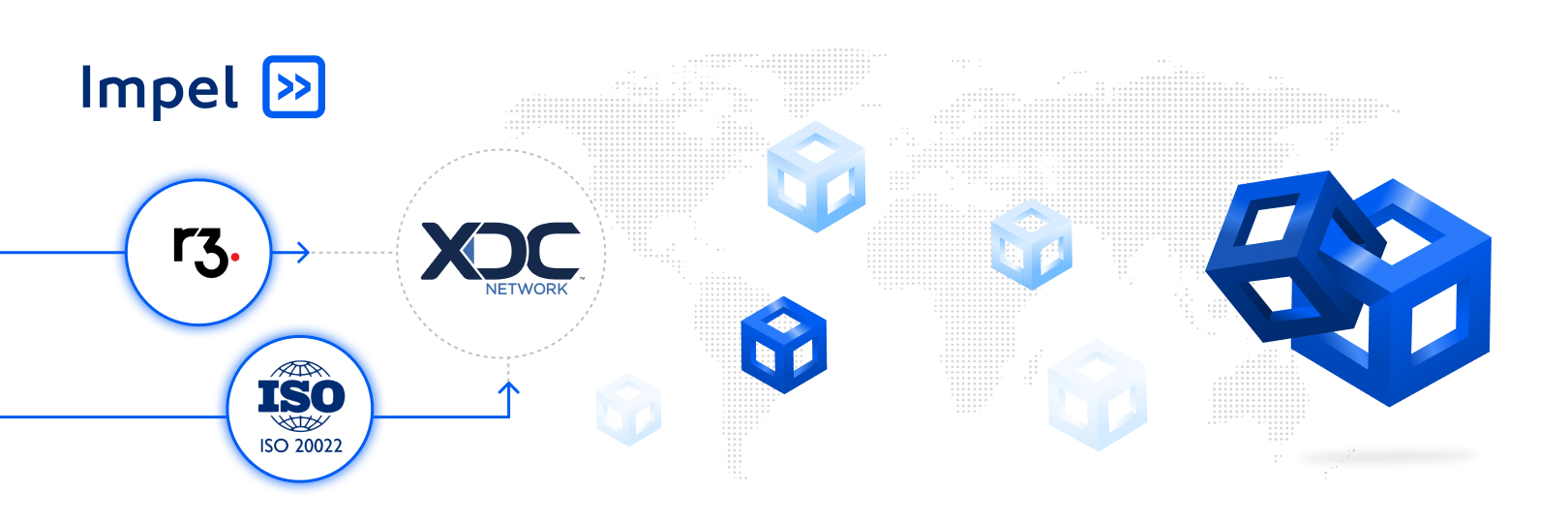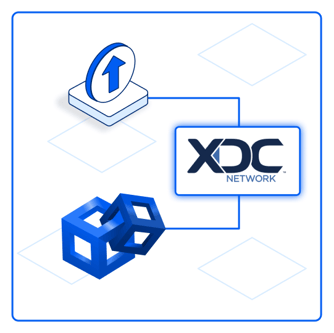What do blockchain and digital assets hold for the future?
- October 21, 2022
-

Written By Troy S. Wood
- Type: Blog
- Content Tag: Blockchain

A pernicious question that seems to keep cropping up in conversations outside of the digital asset “crypto” community: Is blockchain technology the future, or just another technology fad destined to fade over time?
It’s not an unexpected concern - after all, blockchain is such a transformative technology that claims about its potential can seem unreal to some. Currently, some of the most visible use cases for the blockchain involve speculative investments, many of which have been leveraged by savvy individuals to create generational wealth. But some more traditional investors see the playful, youthful energy of crypto culture as unserious.
However, behind the scenes, innovative creators and entrepreneurs are using blockchain technology to create technologies that touch some of the pillars of our global economy. Just as many businesses saw the internet as a distraction instead of the future of commerce, blockchain’s true impacts are still emerging.
So, what does the future of blockchain, and affiliated technologies like cryptocurrency and NFTS, look like? And how are these technologies making deeper waves today?
The state of cryptocurrency today
There are many facets to the set of digital assets and technologies all referred to as “crypto”. For some, it’s a laboratory to create value and develop innovative new use cases for future tools and experiences. Many others see it as something like a stock trading floor. For artists, the blockchain can be an invaluable tool to bring exciting new technology-driven art to the market in a democratic way, in the form of digitized artwork as NFTs (non-fungible tokens). The flexibility of the technology makes it a source of limitless inspiration.
How you engage with cryptocurrency will color your experience. This has become increasingly obvious as market volatility has led to a significant loss in value for some currencies recently, when markets pulled back from their all time highs.
However, as numerous commentators note, this recent “crypto winter” may strengthen the future of cryptocurrencies and the blockchain, as it weeds out some of the speculative assets and helps refocus energy, intention, and investment on technologies like the XDC Network and its native coin, XDC, that powers tangible, game-changing technologies like secure financial messaging and trade finance.
Is cryptocurrency a legal tender?

Over the years for most people, crypto assets are an investment rather than a medium of exchange. For the attribute of money to be quantified, it must be stable and widely accepted by all as a legal tender used for the payment of a debt and the exchange of goods and services. The adoption of cryptocurrencies has been a limitation for some countries while others are looking in the direction of making it a widely used currency.
Presently, countries that allow cryptocurrencies as a legal tender include: El Salvador, the first to use both USD & BTC, and the Central African Republic which uses BTC & XAF. Although there are many digital assets currently that total more than 21,000 with an impeccable growth rate, their volatility is uncertain which creates a limitation to its adoption. This limitation hinders smooth operations of businesses and users all over the world.
As a series of analytical research projects are progressively carried out, knocking down these limitations for proper adoption and mass usage is well under way. Through innovations like blockchain technology, the use of monetary policy, and smart contracts, these hindrances can be overcome for effective use by business and governments in the near future. Blockchain technology and the usage of software APIs (application protocol interface) can help build a well-secured technology like Impel’s ISO 20022 financial messaging which serves as a platform for regional and cross-border payments. They even offer instant settlement capability, rather than the traditional time-wasting wire transfers.
Pros and cons of digital asset investment include:
Pros:
- Better access to wealth across the board
- Borderless transactions with easy interoperability
- Low buy-in cost to invest in a growing industry
- Smart contracts eschew traditional intermediaries, transaction fees, and bottlenecks
- Improved transparency of transactions via block explorers
- Lower use of intermediaries while promoting direct transactions
Cons:
- Lots of attention and a lack of public education concerning risk
- Misuse of technology as it currently exists (i.e., wash trading, rug pulls, wallet hacks)
- Market consolidation by large banks and “crypto whales”
- Layer 1 blockchains can be susceptible to cyber-attacks
How are digital assets and blockchain impacting the world?
 Let’s consider a few examples of how crypto is impacting the world today:
Let’s consider a few examples of how crypto is impacting the world today:
The blockchain — Perhaps the most well-known and most versatile aspect of the entire ecosystem, distributed ledger technology (DLT) produces an immutable record of transactions that can be used to track just about anything in a secure, reliable way.
In practice, that means creating systems that document the movement of goods, monitor exchanges, and track metrics and milestones of all varieties, and do so in a way that can’t be forged — a shipping container can be tracked through customs using the same fundamental technology that can be used to record the sale of a home or a piece of digital art, all recorded as transactions on public blockchains.
R3 Corda — This relatively new private platform that offers advanced interoperability and settlement, rather than the traditional methods of settling financial obligations that require arduous external processes to meet compliance standards. These old processes can be costly and time-consuming for all parties involved.
Fortunately, Impel offers a new way to settle financial obligations, such as payments “on chain,” for agreements rather than traditional methods. Using Impel’s R3 Corda Bridge, businesses can send and receive digital assets (cryptocurrency), like XDC, or XRC-20 (layer 2) tokens, like wrapped BTC, USDC, or others, to and from the XDC Network
Learn more about Impel’s R3 Corda Bridge:

Forfaiting — A staple of the global economy, forfaiting allows established businesses to create liquidity by selling the rights to medium and long-term receivables at a discount. Rather than take on debt, this practice produces cash without increasing credit risk, transfer risk, or the risks posed by rate changes.
Blockchain technology can help streamline forfaiting by bundling the portfolio of invoices to be digitized as an NFT on the blockchain, which can then be sold quickly and easily, often at a slight discount. Banks and investors can use Tradeteq to buy trade finance portfolios and once the account receivable comes in, they get the full amount of the invoice, making a profit on the investment. For the manufacturers and suppliers, it’s a quick and low-risk way to produce cash flow when it's needed most.
A tangible future
We believe the blockchain and digital assets ecosystem will continue to evolve, becoming a bigger part of everyday lives, and that widespread adoption of these technologies is right around the corner. While early iterations of the technology may have been somewhat niche among technically-minded, entrepreneurial types, we’re already seeing several use cases cross over into the mainstream. Blockchain is ready to move beyond investment portfolios and NFT artwork to become a new pillar of the global economy.
For crypto to grow sustainably, the industry will need to educate people about best practices for cybersecurity, portfolio diversification, and how to spot fraud.
A future where blockchain is used to lower verification costs and increase the transparent recording of property rights can strike a balance between scalability, decentralization, and security, thereby solving the blockchain trilemma.
What does the future of blockchain look like?
More (intelligent) regulation — The wild west world of crypto isn’t going to last forever. As more institutional brokerages and investment banks buy in, investor protection, compliance and transparency, and limits to risk-taking will have to be supported.
Regulation will likely happen across the industry and come in several forms to insure exchanges and avoid financial instability and illegal activities. In the short term, investment banks may be required to maintain higher capital ratio requirements to invest in certain types of crypto. Assets like stablecoins themselves may be required to hold higher capital ratios or be otherwise collateralized to ensure they don’t lose their fiat currency peg.
This push toward regulation is incentivizing the development of more secure forms of blockchain technology and clearing the way for more widespread adoption by weeding out bad actors. The nature of the monetary policy can be changed using the cryptographic algorithm in the management of currency, although it is challenging for this algorithm to handle complex decision-making that would involve accountability.
More education — Many people haven’t had the opportunity to develop the financial literacy necessary to manage a balanced investment portfolio of traditional assets, much less one inclusive of the innovative world of cryptocurrencies. At the same time, it has never been easier to invest in sophisticated assets or make big bets on margin.
For crypto to grow sustainably, the industry will need to educate people about best practices for cybersecurity, portfolio diversification, and how to spot fraud.

Improvements to financial systems — One of the biggest pain points for both industry pros and end users is the use of 1st and 2nd generation digital assets like Bitcoin and Ethereum as currency in our daily activities and enterprise transactions.
Right now, transactions and payments are faster, with lower fees and a reduced energy impact. Impel’s ISO 20022 API is setting new standards for financial messaging, and 3rd generation blockchain networks, like the XDC Network are increasing the number of transactions per second to 2,000+, while cutting network transaction gas fees down to a fraction of a penny ($0.00001), as well as near instant settlement with their 2-second block time.
Limits or restrictions on promotions — Often there are promises of huge rewards for new investors, but very little discussion of the risks. That will have to change in the years to come as regulations drive the need for consumer safety protections in the form of mandatory disclosures, much like those that accompany more traditional financial instruments today.
Improved trust around the world – Blockchain is already proving to be valuable in countries where the currency isn’t widely trusted or currency can’t be standardized and used internationally. Panama follows in the footsteps of other Central American countries like El Salvador, Lugano, and Honduras Prospera, seeking to allow Bitcoin (BTC) and other cryptocurrencies, including the XDC Network’s XDC coin to be accepted in Panama after the National Assembly passes the initial steps.
Improved cryptocurrency financialization enables easier cross-border payments and transactions with the XDC Network, which will expedite import and export trades, and simplify international commerce, while also helping people send money to friends and family members abroad.
Conclusion
While blockchain and digital assets aren’t immune to challenges, there are numerous real-world business use cases adopting blockchain to solve complex problems; and undeniably solidifying their role in the here and now as well as the future -game-changing for many industries.
Even the real-world use cases that exist today are changing the way things have been traditionally done; and, with the continued help of software architects and developers, advanced technology and innovation, there is unwavering hope of tackling blockchain’s limitations, bringing mass adoption and usage; making people’s lives better and allowing business operations to run smoother with improved transaction reporting. Now’s the time to take what we know and proceed to the next level.
See what the future of blockchain financial services looks like:


Written By: Troy S. Wood
CEO & Founder at Impel a Blockchain FinTech



